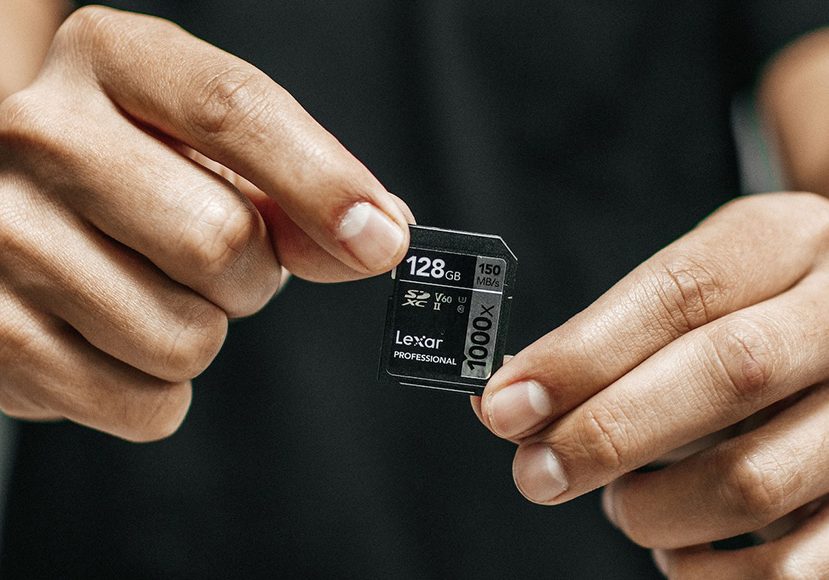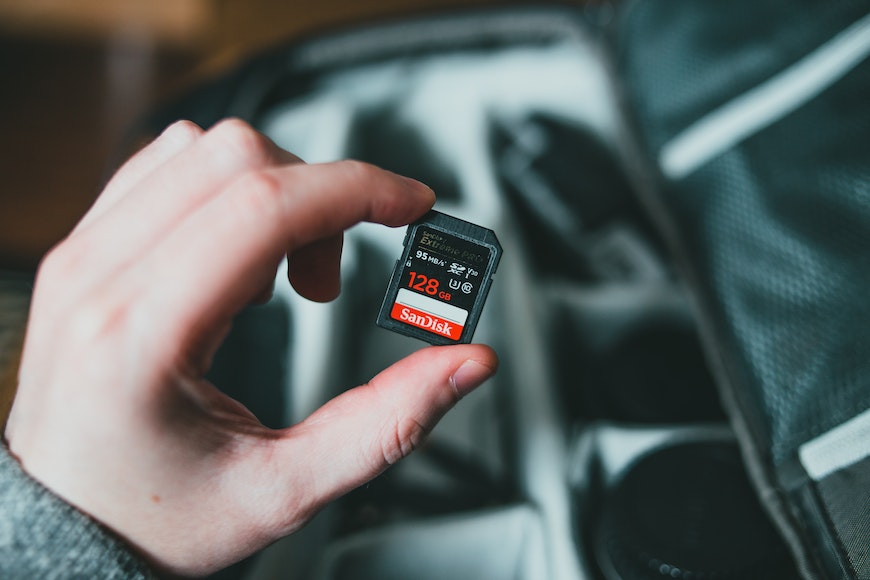
How Many Hours of Video Can 128GB Hold? (With Examples)
Want to know how much video will fit on 128GB of storage? Find out as we look at the factors impacting file size and real-world examples.
How much video can 128GB hold? Good question! The answer is, it depends.
I know that’s not a very satisfying answer!
But bear with me and I’ll give you a better (albeit longer) one.
Below we’ll look at the different factors that impact your video file size and, thus, how much video you can fit on your 128GB device.
To make it easier, I’ll also include some real-life examples of how many videos you can fit based on different video qualities.
So, keep reading.
How Many Hours of Video Can 128GB Hold?
How much video a 128 GB memory card or external storage device can hold depends on various factors, including the resolution of the video, the bitrate, and the file format or video format.
So, let’s first understand how different factors impact your video file size.
Video Quality
The quality of a video refers to its resolution – i.e., the number of pixels contained in each frame of the video.
The higher the resolution, the more detailed the video will be, but it also means the video files will take up more storage space on your memory card.
There are several common video resolutions you might come across, each offering varying degrees of clarity:
- 480p: Typically seen on older platforms or for lower-quality online streaming due to their smaller size.
- 720p: This is considered High Definition (HD). It’s a common resolution for online streaming services and some types of broadcast television.
- 1080p: Often referred to as Full HD, 1080p offers even greater detail and is the standard for Blu-ray discs and many digital televisions.
- 4K or 2160p: With four times the resolution of 1080p, 4K or Ultra HD offers stunning detail. It’s becoming the standard for newer televisions and high-end online streaming.
- 8K or 4320p: 8K offers four times the resolution of 4K. It’s currently not widely used due to the significant storage and bandwidth requirements, but it’s gaining ground in professional filmmaking and high-end televisions.
Bitrate
Bitrate is the amount of data processed in a given unit of time, typically measured in kilobits per second (kbps) or megabits per second (Mbps).
Higher bitrate equals better video quality, but it also means larger file sizes.
- Related: What is the best SD memory card?
Frame Rate
Frame rate, measured in frames per second (fps), impacts file size because it directly influences the number of frames that are included in each second of video.
When you increase the frame rate, you’re adding more frames to the video, which naturally increases the file size.
For example, a video shot at 60 fps will have twice as many frames in each second compared to a video shot at 30 fps.
This is why high frame-rate video files often require more storage space on your memory card or storage device.
File Format
Different video file formats, such as MP4, AVI, or MOV, also have different levels of compression and encoding methods.
These elements directly impact the video file size. For example, a video file in AVI format would generally occupy more space than the same video in MP4 format, given MP4’s superior compression.
So, as you can see, the video file size will depend on a number of factors.
The Formula for Calculating Video Storage

Credit: Canva
To calculate how much storage a video will take, you can use the following formula:
(Bitrate (in kbps) x Duration (in seconds)) / 8,192 = Storage used (in MB)
Knowing this formula, you can estimate the storage needed for your video files.
For instance, if you have a video with a bitrate of 5000 kbps (typical for 1080p video) and a length of 10 minutes (600 seconds), the calculation would be:
(5000 x 600) / 8,192 = ~366MB
So, a 10-minute video at 1080p would take up around 366MB of storage on a memory card.
This formula can help you estimate file size and better manage your storage capacity.
- Related: How many pictures can 16GB hold?
Real-Life Examples: How Much Video 128GB Can Hold

Credit: Erik McLean
Let’s put the theory into practice by exploring how many hours of video a 128GB micro SD can hold at different video qualities.
- 480p (Standard Definition): Given the relatively low bitrate, a 128GB storage can hold about 75 hours of 480p video.
- 720p (High Definition): A step up in quality, 128GB can accommodate around 40 hours of 720p HD video.
- 1080p (Full HD): With its higher bitrate, you can store approximately 16-20 hours of 1080p Full HD video on 128GB.
- 4K (Ultra HD): At this resolution, a 128GB storage device can hold around 3 hours of footage.
Note that these estimates are approximate and the actual numbers can vary significantly based on factors mentioned above like bitrate, frame rate, and file format.
However, this can give you a clearer idea of how video resolution impacts how much video you can fit on a 128GB device.
FAQs on File Size of Video Files
How many hours of 4k video can 128GB hold?
How much 4k video can 128GB hold depends on a few factors.
The exact amount of 4K video a 128GB storage device can hold can vary based on the specific bitrate, but generally, you can store approximately 3 hours of 4K footage shot at 30 frames per second (FPS).
If the bitrate or FPS increases, the storage capacity in terms of hours will decrease.
How many hours of video can 128GB hold on a GoPro?
The amount of video a 128GB memory card can hold on a GoPro varies depending on the video quality and GoPro settings used.
However, as a general estimate, a 128GB card can hold around 4-5 hours of 1080p footage at 60 frames per second (FPS), or around 2-3 hours of 4K footage at 30 FPS.
How many pictures and videos can 128GB hold?
A 128GB storage device can hold approximately 36,000 high-quality photos (at 3.5MB per photo) and, at the same time, around 5 hours of 1080p video at 60 frames per second (FPS).
The exact number can vary significantly based on the size of each file, the camera’s settings, and the format of the images and videos.
As the Content Manager of Shotkit, India Mantle brings with her a lifelong love for photography that she developed during her childhood, watching her father document their family moments with his Nikon EM. In her free time, you find her enjoying the awe-inspiring natural beauty of her home, Northern Rivers, Australia.













